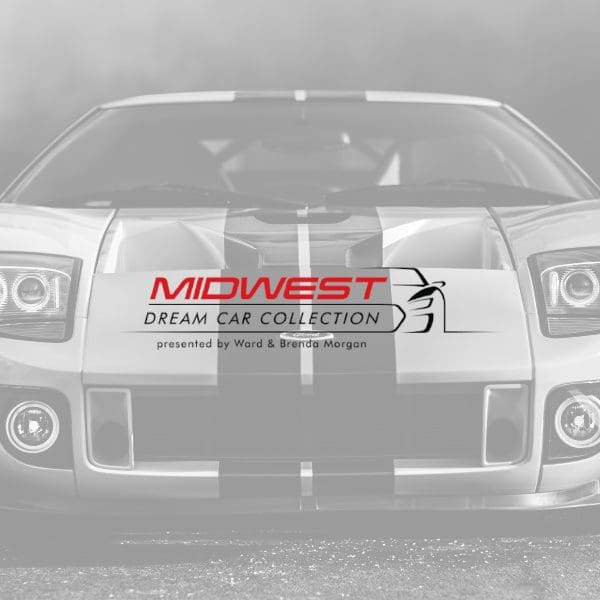
Packard’s rise to the top of luxury auto-making began in 1907, as it introduced the Model 30 to the American market. Originally creating their first car in 1899, James Ward Packard and brother, William, followed with 399 more automobiles they built in a Warren, Ohio factory. While trying to beat the horseless carriages of the Winton Motor Carriage Company—owned by one of Detroit’s wealthiest families—Henry Bourne Joy bought a Packard for himself. The reliability of the car impressed him so much that he and a list of investors put their money toward these two brothers and their dreams of creating an automobile company.
Moving away from the single-cylinder engine used in their first 400 cars, engineers for Packard began creating their first 12-cylinder cars from 1915 to 1923 and then moved into production of their very own straight-8. Entering the 1930s, Packard’s fight against the Great Depression assumed a unique approach: Build even more lavish and expensive cars than they had before.
Alvin McCauley, the head of Packard, decided the luxury car could not make it alone in the auto industry. Hence, Packard decided to create more affordable vehicles for the market.
The 1932 Packard 902 coupe roadster . . .
For 1932, the 902 coupe roadster was the more affordable Packard of its day, as it still is (relatively speaking), with its big brothers commanding upward of a million dollars. An entry-level luxury car, this 902 produces 110 horsepower from its straight 8, in contrast to the twin 6 at 150 horsepower. The 902 standard 8 is one step above the light-8 900 (shovel nose) and the 901, but one step below the deluxe or super 8. The suggested retail price on the 902 was $2,600, about $1,000 above the light 8 and $1,000 below the deluxe 8. The 902 Series offered 12 different body styles, this one being a coupe roadster.
Although Packard was synonymous with luxury, the company was much smaller than the big auto-makers like Ford and GM, so it was unable to take small-loss hits like its competitors. New ideas could make or break the company, which made sales highly volatile.
This particular Packard was built in 1932 with a straight-8-cylinder engine paired with a 3-speed manual transmission. The engine was a 319.2-CID in-line L-head 8-cylinder producing 110 horsepower at 3,200 rpm. The MSRP for this particular car was about $2,650.
Midway through the 1932 model year, Packard introduced its first-ever synchronized mesh transmission, which replaced its unsynchronized 4-speed with a synchronized 3-speed, making shifts much more efficient and comfortable for the driver.
This car contains a rear-mounted spare, wind wings, stone guards, rumble seat, wire wheels, leather interior, and Trippe lights (the lower two lights on the front bumper). Prior to its ownership by the Midwest Dream Car Collection, this particular car, along with the 1931 Packard, were part of the Oliver Collection in Oklahoma. This Model 902 is painted in a stunning and flawless cream exterior, paired with a black-leather interior.
The Packard Motor Car Company continued creating some of the finest and most elegant cars in automotive history, making a reputable name for itself as well as some of the most desired cars of collectors worldwide. Ultimately, the company met its demise in 1956, when it was absorbed into the Studebaker-Packard Company due to falling sales numbers. Due to its impressive legacy, however, the Packard Motor Car Company is revered to this day by car collectors everywhere.
More on the 1932 Packard 902 (standard 8) . . .
Standard 8s were made in 1932, 1933, and 1934. They were renowned as the “entry-level Packard, but with similar performance to the bigger brothers.” The difference between the standard 8’s 110 hp and the twin 6’s 150 hp was not far off, considering the standard 8 was the low-end model below the deluxe 8 and twin 6 models.
Overall, the auto industry produced about half as many cars in 1932 as in 1931.
Times were bad for the car world, and Packard did not have a mid-level car for consumers.
The light 8 (designated by the 900 series) was conceived of as a slightly more affordable model. For only $600 more, you could have the standard 8 with more horsepower and a larger engine. This car shares an engine and transmission with the light 8, but it weighs 1,000 pounds less than the twin 6.
A Road Less Traveled with Restore Cars:
https://www.youtube.com/watch?v=b4BQddvmOes&t=955s
https://en.wikipedia.org/wiki/Packard
Signup for our newsletter to stay up-to-date and connected.